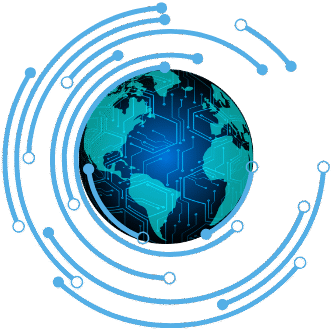As artificial intelligence (AI) technologies quickly develop and integrate into various aspects of our lives, understanding and addressing their potential harms has never been more critical. Recent insights from Anthropic shed light on their comprehensive approach to risk assessment and mitigation, emphasizing the need to address a wide spectrum of potential impacts—from catastrophic scenarios to everyday concerns surrounding child safety, disinformation, and fraud. This article explores how a well-structured approach to assessing AI harms can fundamentally enhance safety and responsibility in AI development.
The importance of a nuanced approach cannot be overstated. As AI models grow in complexity and capability, they present not just opportunities but also various challenges. By structuring their analysis of potential harms, Anthropic aims to equip teams with a clearer understanding of the issues at hand, which will ultimately inform responsible AI development. This structured approach complements their existing Responsible Scaling Policy (RSP), which specifically focuses on catastrophic risks. By broadening their framework, they aim to capture a wider range of potential impacts, thereby establishing a more rounded perspective on what responsible AI should encompass.
Anthropic’s evolving approach serves as a foundational strategy for clearly communicating risk and making well-informed decisions. This framework has been designed to adapt to the dynamic landscape of AI and incorporates baseline dimensions that can expand over time:
Physical Impacts: This dimension examines the potential effects of AI on physical health and well-being.
Psychological Impacts: Here, the focus is on mental health and cognitive functioning, evaluating how AI interactions can influence an individual’s psyche.
Economic Impacts: This aspect looks into the financial consequences and property considerations arising from AI applications.
Societal Impacts: The societal dimension evaluates the effects of AI on communities, institutions, and shared systems, underscoring the broader implications for social structures.
- Individual Autonomy Impacts: This examines how AI could affect personal decision-making and freedoms, emphasizing the importance of user agency.
Each of these dimensions is analyzed based on factors such as likelihood, scale, affected populations, duration, causality, technology contribution, and the feasibility of mitigation strategies. By examining AI impacts through these lenses, Anthropic aims to enhance the understanding and significance of different potential repercussions.
To manage and address these risks, Anthropic employs a variety of policies and practices. For instance, their comprehensive Usage Policy establishes guidelines for responsible use, while evaluations—including adversarial testing and red teaming—are conducted both pre-and post-launch to identify weaknesses and facilitate prompt improvements. Advanced detection techniques help to identify misuse, while a robust enforcement framework addresses potential violations, ensuring that necessary safeguards are in place without compromising the operational functionality of their AI systems.
One example that highlights this proactive framework is in the area of computer use. As AI systems evolve to interact with various software platforms, it’s essential to evaluate the potential risks involved, especially concerning financial and communication tools. The very capabilities that make AI systems useful could also open avenues for fraud and misuse. Therefore, targeted safeguards are crucial. For example, Anthropic’s initial designs around computer interaction led to stricter enforcement thresholds, coupled with advanced summarization techniques to detect and counteract potential harms while adhering to privacy standards.
Another key area of focus is model response boundaries, which investigates how AI systems respond to user requests. Balancing helpfulness with appropriate limitations is critical; overly helpful models may provide dangerous information, while overly cautious models may end up refusing benign requests. Anthropic’s assessments have led to improvements, allowing models like Claude 3.7 Sonnet to handle user prompts more effectively, yielding a significant reduction in unnecessary refusals while still safeguarding against genuinely harmful content.
Looking ahead, it’s clear there’s much more work to be done. The approach to understanding and addressing AI harms is an essential input into a comprehensive safety strategy, yet it’s merely a foundational step. As AI capabilities evolve, new challenges will emerge, some of which may be difficult to foresee. Anthropic is committed to refining their frameworks and assessment methods, bending to the evolving landscape while learning from both successes and failures.
Given the complex nature of these issues, Anthropic acknowledges that collaboration is vital. Engaging researchers, policymakers, and industry partners is essential for tackling these pressing challenges. A collective effort can pave the way for responsible AI development, aimed at ensuring these systems serve humanity positively.
In conclusion, as we navigate the rapidly evolving world of AI, understanding and addressing the potential harms is crucial. By employing a structured approach that examines multiple dimensions of impact, organizations like Anthropic are taking significant strides toward responsible AI development. As these technologies continue to advance, so too must our strategies for managing their effects, ensuring that as AI becomes more powerful, it does so in a manner that is beneficial and equitable for all. For further dialogue on this important issue, interested parties are encouraged to reach out to Anthropic via their user safety channel.



:max_bytes(150000):strip_icc()/GettyImages-22170656801-e023b7322df64c07847283bcb4a46a6a.jpg?w=150&resize=150,150&ssl=1)






